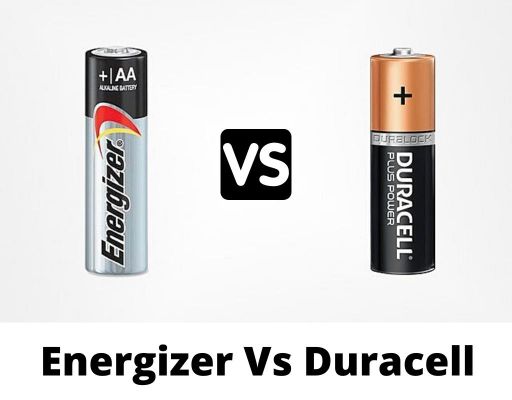Flashlights, toys, pocket radios, and clocks are examples of devices that use these batteries. So, whether your flashlight, your child’s remote-control car, or your interactive pet isn’t operating properly, now is the time to change the batteries. What matters is that you get the proper kind of batteries for the device in question.
Because of the size difference, it’s critical to make sure you get the right ones when purchasing new batteries. If not, you’ll either have to modify them to fit within the battery compartment or pay more money to get the right size.
I’ll go over all you need to know about the differences between a C and a D battery in this article. Thus, take a deep breath and read the entire article.
What Is C Battery?
C batteries are a common dry cell battery type. Dry cells were built to operate with the least amount of internal moisture possible, making them excellent for portable electronics.
The most common dry cell battery sizes are AA and AAA; however, because they are smaller than size C batteries, their lifespan is less.
Benefits of C Battery
- Rechargeable C batteries are more expensive than their non-rechargeable equivalents.
- Because they may be utilized for a long time, they are known for their long-lasting performance and longer battery life.
- Rechargeable C batteries are a much better option because they are more cost-effective.
- They can be recharged anywhere between 500 and 800 times.
C Batteries Size
C-cell batteries can have a variety of capacities and voltages, but their physical size remains the same. C-type batteries are designed to be compatible with a wide range of devices and accessories, including battery holders.
C-sized batteries are smaller than D-sized batteries, but they are larger than AA and AAA batteries. They are as follows:
The length is 50mm (1.97 inches).
The diameter is 26.2mm (1.03 inches).
C Batteries by Chemical
C batteries differ not only in terms of capacity and voltage but also in terms of the fundamental materials utilized in their manufacturing.
The following sections look at lithium and alkaline batteries, which are both common.
C Battery Alkaline
A potassium hydroxide alkaline electrolyte (anti-acidic electrically-conducting combination) is used in an alkaline C battery.
Alkaline C batteries are one of the most extensively utilized types of batteries due to their high energy density and long shelf life. They can be found in a variety of ordinary household goods.
Lithium C Batteries are a type of lithium-ion battery
The metallic element lithium is used as the principal anode in lithium C batteries (central conductor).
They are distinguished from the rechargeable lithium-ion battery that is commonly used in portable electronic devices such as smartphones and laptops for their long life.
The charge of the latter is derived from the movement of lithium ions.
What Is D Battery?
The D-size battery is a dry cell with electrical connections on both sides that is cylindrical. Originally, D cells were known as flashlight batteries.
D batteries are typically used in high-drain applications such as flashlights, automatic odorizers, paper towel dispensers, transmitters, radio receivers, and other devices that require a long run time.
Benefits of D Battery
- Ready in a flash
- The long period of storage
- A lot of specific energy
- Achievable power density and energy efficiency
- Budget-friendly
- Require very little or no upkeep
- Ecologically friendly
D Battery by Chemical
With an 8000 mAh charge capacity and 12 Wh typical energy capacity, a Zinc Carbon D battery is technically recognized as R20 based on IEC standard and 13D based on ANSI/NEDA designation.
LR20 is the IEC term for alkaline chemistry, and 13A is the ANSI/NEDA name. It has an average charge capacity of 12000–18000 mAh and an energy charge of 18–27 Wh, which is more than the Zinc-Carbon model.
FR20 (IEC) and 13LF are other names for lithium iron disulfide (LiFeS2) (ANSI). The IEC has given the NiCad D cell the designation KR20. It has a usual charge capacity of 2000–5500 mAh and a 2.5–6.9 Wh energy capacity.
The NiMH D-size battery is known by its technical name, HR20, from the International Electrotechnical Commission.
This model has a greater charge capacity of 2200 to 12000 mAh, with usual energy of 2.75 to 15 Wh. The nominal voltage of Lithium, Zinc Carbon, Alkaline, and LiFeS2 is 1.5V.
What Are the Differences Between C Battery Vs D Battery?
There are several key differences between a C Battery and D Battery. Time to take a look.
C Battery Vs D Battery at a Glance:
| Features | C Battery | D Battery |
| Appearance | Comparatively smaller. | Large in size |
| Size | 50 mm x 26.2 mm | 61.5 mm x 33.2 mm |
| Capacity | Up to 8,000mAh | Up to 17,000mAh |
| Supported devices | Medium-drain applications: small flashlights, toys | High-drain applications: large flashlights, radios, alarm systems |
| Cost | Costs less than D Battery | Costs more due to its capacity. |
Dimension: C battery is smaller compared to a D battery.
Cost: C batteries cost significantly lesser than D batteries. Even though they are being used in various sectors.
Supported Devices: C batteries are for small flashlights and toys, where D batteries are for Large flashlights, radios, alarm systems.
How To Use a C Battery in a D-Size Spacer?
Another factor to consider is the amount of space available for the battery. Keep in mind that C batteries are somewhat shorter than D batteries, so you’ll need to create an adaptor to keep them in position.
To use a C battery in a D-size spacer, just place two quarters, one at each end of the battery, into the gap where the battery sits.
Frequently asked questions (FAQs):
Which C Batteries are the Best?
Energizer, Duracell, ACDelco are good and promising brands for C batteries.
Can Non-Rechargeable C Batteries Be Charged?
No. Non-rechargeable batteries aren’t meant to be charged; and attempting to do so can result in ruptures, overheating, and even explosions.
Can C Batteries Be Recycled?
C batteries, like other conventional battery sizes, can be recycled.
What Is the Life Experience of D Batteries?
In continual use, primary D batteries last about 36 hours on average. The rechargeable variety, on the other hand, lasts for roughly 2-3 years before needing to be recharged.
What Does the Term “BATTERY CAPACITY” Mean?
The capacity of a battery is measured in “mAh,” which stands for “milliamp-hours.” For example, a battery with a capacity of 1800 mAh may deliver a current of 1800 milliamps per hour.
Summary
Now that you’re more knowledgeable about the differences between C Battery and D Battery, you’ll be able to make calculated decisions on which one to use for your specific need.
Related Posts:


